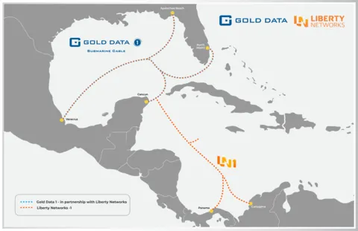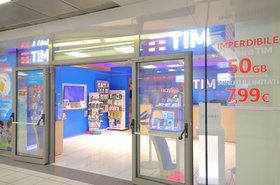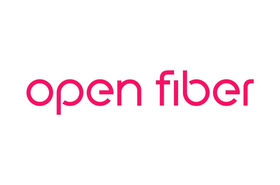Liberty Networks and Gold Data are partnering on a new subsea cable system connecting the US and Latin America.
The system, expected to be up and running by 2026, will be split into two segments: the Gold Data 1 (GD-1) system and Liberty Networks 1 (LN-1) system.
The two companies will jointly operate and own GD-1, the northern segment, while Liberty Networks will fully own LN-1.
The combined subsea networks will provide diverse connectivity routes between the US and Mexico, and further link to new data hubs in Colombia, Panama, and the Caribbean. It will also be the two lowest latency routes between the US and Mexico.
Liberty Networks is an infrastructure and enterprise connectivity provider in Latin America and the Caribbean, connecting around 40 countries with 50,000km of subsea fiber optic cables.
"We are excited about collaborating with Gold Data on this groundbreaking project," said Ray Collins, Liberty Latin America's SVP of infrastructure and corporate strategy. "The combination of GD-1 and LN-1 will deliver a subsea cable system with unparalleled capabilities. The new system will seamlessly integrate into our existing subsea meshed platform, adding new routes and materially expanding our capacity. The LN-1 system can be further expanded to complement our capacity and diversity throughout the Caribbean."
"We are thrilled to combine forces with Liberty Networks to create a new subsea system that extends the previously announced GD-1," said Renato A. Tradardi, Gold Data’s Chief Executive Officer. "Combined with our terrestrial investment in Mexico and offering the lowest latency route, we are setting a new standard for connectivity between Mexico and the US."
Gold Data provides telecommunications infrastructure throughout the Americas and the Caribbean, interconnecting 156 PoPs and 76 data centers.
2Africa lands in Accra, Ghana
Bayobab (formerly MTN GlobalConnect) has landed the 2Africa subsea cable in Accra, Ghana.
2Africa, at 45,000km, is the world's largest subsea cable. It will connect 33 countries with 46 landing points across Africa, Europe, and Asia when complete. The cable system will have a design capacity of up to 180Tbps.
The portion of the cable covering East Africa has already gone live, though the West Africa portion is still being deployed, with Accra, Ghana, the latest landing.
This landing is Bayobab's third in a series of six target locations across five countries, and the Ghana landing will enable connectivity access for the surrounding inland counties including Togo, Burkina Faso, Niger, and Mali. 2Africa is the sixth cable to land in the country.
In a LinkedIn post, Bayobab said of the landing: "This monumental achievement promises to enhance internet connectivity across Africa, marking a significant step forward in our mission to empower and connect communities.
The West African portion of 2Africa has already landed in the Republic of Congo, and Angola. The cable will have more stops along the African coast, ultimately reaching Portugal and the UK. The cable is being developed by a consortium that includes China Mobile International, Bayobab, Meta, Orange, STC, Telecom Egypt, Vodafone, and WIOCC.
Telxius joins Firmina subsea cable system
Telefónica subsidiary Telxius is joining Google on the Firmina subsea cable system planned to connect the US, Brazil, and Argentina.
Firmina is set to connect the East Coast of the USA to Las Toninas in Argentina, Praia Grande in Brazil, and Punta del Este in Uruguay.
With the addition of Telxius, the cable will also be hosted in its Santos digital hub in Brazil. Texius' customers will now benefit from three cable routes to the US - Firmina, Brusa, and SAm-1, and three to Argentina - Firmina, Tannat, and SAm-1.
"In today’s rapidly evolving business landscape, we believe in the continuous growth of our international submarine cable network to create major business opportunities for all of us involved,” said Mario Martín, CEO at Telxius.
Telxius is also a part of the Marea, Brusa, Dunant, Tannat, Junior, Mistral, and Tikal subsea systems.
Exa Infrastructure adds second submarine route to Crete
Exa Infrastructure is linking Crete with mainland Greece via a second submarine route.
The company announced on November 30 that it would be extending its Mediterranean network by adding 550 kilometers of a new DWDM system on two dark fiber routes.
The new submarine route will land in Chania, Crete, and will connect the island to mainland Greece in Athens and Preveza.
“The demand for reliable, high-capacity connectivity is driven by the growth of new subsea cables landing in Crete which will connect Europe with the high growth Asia Pacific and African regions. Additionally, a number of data center operators have announced builds on the island, which will position Crete as a neutral interconnect location for subsea cables,” said Steve Roberts, vice president of network investments, Exa Infrastructure.
The network direct route to Athens will be ready for operations in Q1 2024, with phase two ready in Q3.







